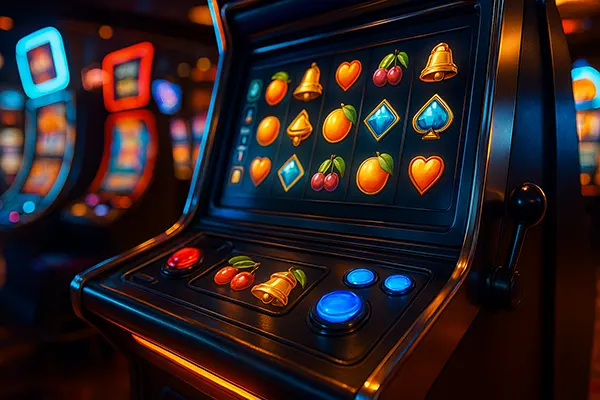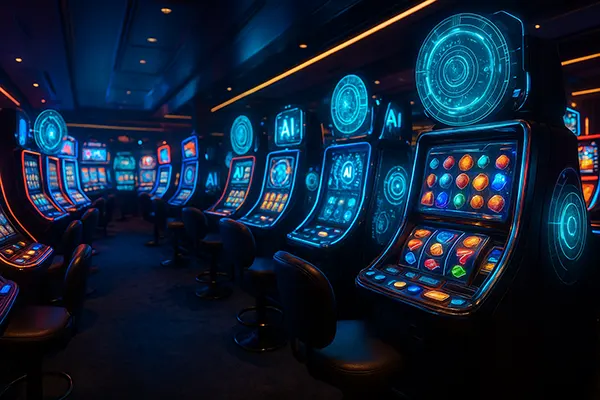
The New Era of Slots 2025: How Mechanics and RTP Are Changing
Slot gaming in 2025 has reached a new technological and creative milestone. Developers are rethinking traditional principles, introducing complex mechanics, dynamic RTP models, and cross-platform synchronisation that reflect real-time player behaviour. The modern slot is no longer a simple spin-based game but an interactive digital product that combines AI-driven adaptability with entertainment value. This transformation is reshaping not only how people play but also how the industry approaches fairness, engagement, and profitability.
Evolution of Slot Mechanics in 2025
The shift towards hybrid mechanics has become one of the defining features of 2025. Studios including Pragmatic Play, NetEnt, and Push Gaming are integrating new layers of interactivity, from cascading symbols to adaptive paylines and bonus-building systems. These innovations aim to maintain player interest while reducing predictability, providing a balance between randomness and control. Such features have elevated engagement, making each spin feel more strategic and less mechanical.
Analytical reviews and expert commentaries on gaming trends published by trusted media outlets, including https://ompokeronline.com/, often underline how modern technology is reshaping user interaction and responsible entertainment. They provide valuable insights into how creative design meets advanced algorithms to create safer, more transparent, and engaging gaming experiences.
Multi-phase bonuses have also evolved dramatically. Instead of standard free spins, players now encounter multi-level progressions where achievements unlock new gameplay dimensions. These mechanics extend the gaming cycle and create a sense of progression similar to video games. As a result, developers are transforming the slot experience into a longer-term form of entertainment rather than a short burst of chance.
Dynamic RTP: A New Standard of Fairness
Return to Player (RTP) has always been a key factor in slot design, but in 2025 it has taken on a more flexible form. Instead of fixed percentages, many developers are introducing dynamic RTP systems that can vary depending on the mode of play or user engagement. For example, extended sessions or bonus activations may slightly increase RTP to reward long-term play without violating fairness principles.
This shift is also linked to stricter regulations in Europe, where transparency in gambling has become a priority. Game studios now provide detailed RTP disclosures per feature or mode, allowing users to see how different elements affect payout potential. This not only builds trust but also aligns with the European Commission’s updated guidelines on digital entertainment ethics.
Furthermore, blockchain-based verification is gradually being integrated into slot infrastructure. By recording game results on decentralised ledgers, developers can offer transparent proof of randomness. Though still emerging, this technology could become a standard across jurisdictions by 2026.

The Role of Technology and Design Innovation
Graphical design and sound have evolved alongside mechanical innovation. 3D rendering engines such as Unreal Engine 5 are now standard in premium slot development, delivering near-console-quality visual effects. Developers are also adopting procedural generation to create dynamic backgrounds that respond to gameplay events, enhancing immersion without overloading performance.
Sound design has similarly matured, with adaptive soundtracks that shift in intensity based on reel outcomes or bonus triggers. This creates a cinematic experience that feels responsive and emotionally engaging. Rather than relying on repetitive jingles, developers now invest in fully orchestrated soundscapes tailored to each game’s theme.
Cross-device synchronisation has become essential. With players switching between smartphones, tablets, and desktop systems, developers now employ unified interfaces and cloud-based save systems. These ensure that progress and personal settings remain consistent regardless of the device used, marking a step towards a seamless multi-device gambling environment.
What to Expect Beyond 2025
Looking ahead, the next wave of slot innovation will likely focus on immersive integration with virtual reality (VR) and augmented reality (AR). Several major studios, including Evolution and Yggdrasil, are testing prototypes that combine real-time 3D environments with live dealer interaction. These experiences aim to merge the social dynamics of live casinos with the personalisation of online gaming.
Another expected development is the use of predictive analytics to identify player fatigue and promote responsible gambling. By monitoring gameplay intensity, systems will recommend breaks or lower-stake modes when detecting signs of risk. Such approaches are already being tested in regulated markets like Denmark and the United Kingdom, setting a new ethical benchmark for the industry.
Ultimately, 2025 represents not just an evolution but a redefinition of what slot gaming means. Through innovation, transparency, and advanced design, developers are turning slot machines into intelligent, player-focused experiences that align with modern expectations of fairness, engagement, and responsibility.
